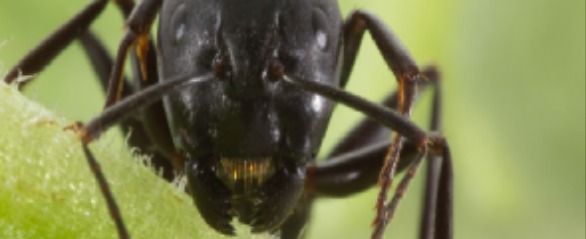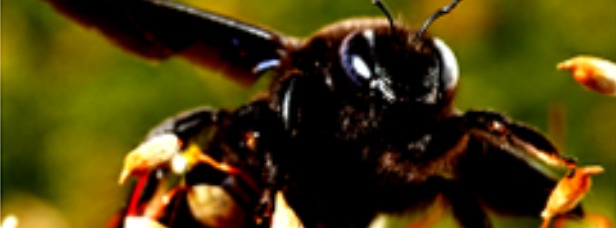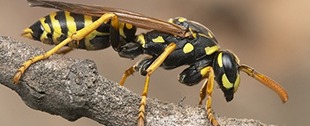Insect Species
Insect Pest Control: Species We Handle
Stop intrusive pests from damaging your property and spreading infectious diseases — it's as simple as turning to Suburban Wildlife and Pest for help. Our team specializes in insect pest control in Windham, NH, and we've developed many strategies[link to Our Approach] for dealing with the area's most persistent critters. It's thanks to our extensive knowledge of insect habits and biology that we're able to effectively control our clients' infestations. As such, we're happy to share this knowledge with you in the event that it helps you stop these pests from making themselves comfortable on your property.



Carpenter Ants: Carpenter ants are found throughout the country, but are especially common pest insects in the northern states. They can be black, red, or a combination of the two colors, and are generally no more than 3/4 of an inch long. Carpenter ants get their name from their method of nest-building, which involves excavating moist wood to form tunnels. Over time, their systems of tunnels can become extensive, compromising a building's structural integrity. The best way to prevent them is by eliminating water sources and ensuring your home or business doesn't offer any easy points of access.
Bees: Bumblebees and honey bees are both benign insects that live alongside people harmoniously. However, if they move in too close to your home or business, the risk for stings may become greater. These bees are pollinators and thus beneficial to the environment, so you may wish to simply have them relocated rather than exterminated. Carpenter bees, on the other hand, are pest insects and behave similarly to carpenter ants by boring into buildings and creating tunnel nests. They resemble beneficial bees, so if you notice bees around your property, it's worth getting a professional opinion.
Yellowjackets: Though there are many different species of yellowjackets, most present as bee-like insects with black and gold stripes. Unlike bees, however, they have long, narrow wings and lack fuzzy bodies. They prefer to feed on trash, including protein and sugary foods. Their stings are painful and can cause allergic reactions. If you notice their characteristic paper nests around your property in late summer or early autumn, it's a good idea to intervene as soon as possible. Yellowjackets can quickly become aggressive and nipping nests in the bud can save you stings and trouble later on.
Hornets: Though they resemble yellowjackets and are members of the wasp family, hornets are unique in that they use their stingers and venom to kill prey. Toxicity varies by species, but the real danger lies in their attack pheromones. Once that pheromone is activated, an entire nest can be roused to action, making their stings deadly. This can also happen when the nest senses a hornet has been killed nearby. It's easy to see why enlisting a professional's help is essential to mitigating these dangerous pest insects. Keep an eye out for their nests in fruit-bearing trees and oak trees.
Bed Bugs: It's common knowledge that bed bugs are among the most stubborn pests in the world. They hide in furniture crevices, under mattresses, and even in the seams of your clothing. Worse, they can go months without eating, making it easy for them to hide and wait for the next meal to walk by. Even if you can eliminate an isolated infestation, they leave their excrement behind, ruining your belongings. Thankfully, you don't have to wage war against bed bugs alone. Contact Suburban Wildlife and Pest ASAP and we'll assess your situation, recommend treatment options, and get to work.

Cockroaches: The classic pest insect. Among all pests, cockroaches are some of the most hated, and it's easy to see why. They're ugly, smell bad, infest our homes, and refuse to die even when smacked with a rolled-up newspaper. From American and Brown Banded to German and Oriental, cockroaches remain a problem throughout the country. Fortunately, when you notice signs of roaches in your home (droppings, bad smells, egg casings), you can always depend on our pest control team for an effective solution. We're familiar with the above roaches and we know what works.
Spiders: When they're outside, many web-weaving spiders are beneficial, capturing other annoying pests that would infiltrate your property. But when they're inside, spiders can quickly become pests themselves. Excessive web-weaving and occasional bites, not to mention thousands of offspring, all make spiders bad roommates. Suburban Wildlife and Pest can help remove and prevent common house spiders, long-bellied cellar spiders (you may also know them as "daddy long-legs"), and fast-moving wolf spiders — all you need to do is schedule an inspection.
Fleas: Even if you don't have pets, fleas can move into your property and make your life harder in hundreds of small, itchy, bite-sized ways. Fleas are too small to squash and often too fast to catch, making them difficult to eradicate short of "bombing" your home. Due to the nature of their life cycles, even if an existing population is killed, that population's eggs can hatch a few weeks later, starting the process anew. Talk to our insect pest control experts to learn how we handle this cycle, eradicate large populations, and prevent the fleas from coming back.

